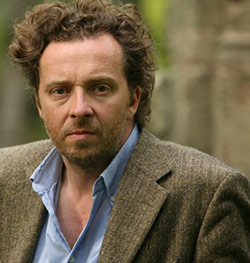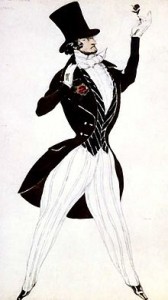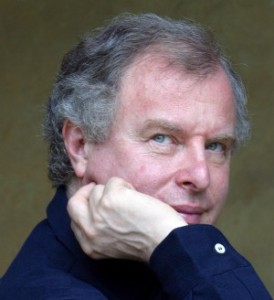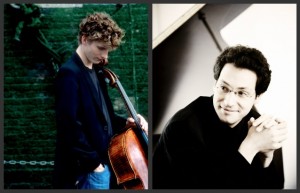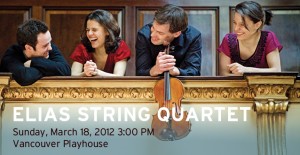J. S. Bach: French Suite no. 5 in G major, BWV 816
Bach’s Partitas, English Suites and French Suites – six of each – collectively rank among the glories of the keyboard literature. Each is a four-part sequence of dance movements, all in the same key but varied in rhythm, tempo and mood: Allemande, Courante, Sarabande, and Gigue. Each movement has a different national origin, respectively German, French, Spanish and English/Irish. To this basic framework additional movements, usually of French origin are found between the Sarabande and Gigue. These dance movements are generally in binary form, with each half repeated.
The French Suites were probably written sometime between 1717 and 1720 while Bach was serving as Kapellmeister and composer in the service of Duke Leopold of Anhalt at Cöthen. No reference to the moniker “French” is found in any of Bach’s surviving manuscripts. He called them simply Suites pour le clavecin; the designation is in French, but the “English” Suites (again, not Bach’s title) also bear French titles (Suites avec leurs préludes). The first reference to “French” Suites is found only in 1762, twelve years after Bach’s death, by the critic and theorist Friedrich W. Marpurg. Numerous musicologists and program annotators have attempted to determine just what is specifically “French” about these suites, but in the final analysis, the answer is “very little, if anything.”
The Fifth French Suite opens with an Allemande of uncommon graciousness and closes with a Gigue requiring great technical facility and a firm sense of rhythm. An Allemande characteristically consists of quietly flowing, continuous sixteenth-note motion, beginning with an upbeat, and moves in moderately slow quadruple (4/4) metre.
The lively Courante takes its name from the French courir (to run). This movement too is characterized by continuous motion, but is generally faster than the Allemande and is in triple metre.
The Sarabande, slowest of the movements, is stately, dignified, and full of elaborate embellishments to the simple melodic line. It is in triple metre, with the second beat of each measure heavily weighted.
The Gavotte in this suite is a bright and breezy piece, often found in collections for young pianists to play.
The Bourrée is a folk dance in quick duple metre and beginning with an upbeat. It originated in the Auvergne in the mid sixteenth century. Its name comes from bourrir, meaning to flap wings. Bourrées often come in pairs, with the second usually of contrasting character.
The rapid and brilliant Gigue, in lilting 6/8 metre, serves as the suite’s finale. Philipp Spitta, Bach’s first biographer, believed that “the hearer goes away with a sense of pleasant excitement.”
Ludwig van Beethoven: Sonata no. 27 in E minor, Op. 90
This sonata is one of the few in Beethoven’s canon of 32 in two movements only. In certain respects, it is a harbinger of the composer’s last work in the genre, the great Op. 111 in C minor (still eight years in the future), in that it contrasts a tempestuous, volatile movement in the minor tonality (E) with a calm, even serene one in the major. Even the first movement’s sonata form and peremptory opening gesture are analogous to those of Op. 111.
The strongly defined contrast between the two movements has an apocryphal biographical explanation. Beethoven dedicated the sonata to his aristocratic friend Count Moritz von Lichnowsky, who was engaged to be married. Presumably, the composer said that it depicted “a contest between head and heart,” which may have been Beethoven’s rough-humoured way of casting doubt on the suitability of the match. Some listeners like to hear the two movements as representing instead speech and song, or prose and poetry. Eric Blom suggests a more general scenario: “All that matters is that we have here two wonderfully contrasted movements which do suggest, in a way applicable to mankind at large, some sort of passionate quest attended by a satisfying discovery, some agitating problem followed by a calming solution.” Beethoven’s detailed performance directions for each movement indicate the care he took to ensure an emotionally committed execution: 1) “With animation, and with feeling and expression throughout”; 2) “Not too fast, and in a very singing manner.”
Johannes Brahms: Four Piano Pieces, Op. 119
The Four Piano Pieces Op. 119 are the last Brahms wrote for solo piano, and among his very last compositions. Each piece except the third is in ternary form, with a contrasting central section and with a return of the opening material now considerably modified and/or abridged. Within these general outlines Brahms lets his poetic imagination roam freely as he develops short, epigrammatic or enigmatic musical cells in some of his most personal and intimate compositions. Simplicity and concentration are the keynotes. Lionel Salter stated the case perfectly when he wrote: “Their brevity only serves to heighten the intensity of their feeling. It is as if the composer, at the end of his life, had compressed the essence of his musical and emotional thoughts into these miniatures.”
The choice of titles is largely capricious on Brahms’s part; there is little to distinguish the single “Rhapsody” from its companions entitled “Intermezzo.”
The delicate yet restlessly meandering first Intermezzo in B minor, with its muted, veiled colours, is followed by another featuring a contrasting central section tenderly evocative of a Viennese waltz. In the surprisingly lighthearted Intermezzo, the melody is found in an inner voice. The final piece also brings surprise, this time for the almost heroic quality it projects. Yet this is heroism thwarted, the Rhapsody ending not in triumph but in tragedy as the music takes a sudden shift into the minor mode during its dramatic final moments.
Franz Schubert: Sonata in A major, D. 664 (Op. 120)
Scholars lack definite evidence of its date and place of composition, but most are willing to grant that most likely Schubert wrote this sonata during the summer of 1819 while vacationing in Steyr in Upper Austria. He wrote to his brother Ferdinand that the surrounding countryside was “unimaginably lovely.” In similar terms he referred to the daughter of one of his hosts, Josefine von Koller, as being “very pretty [and] plays the piano well.” We know Schubert presented her with a sonata, and as biographer Brian Newbould notes, “the A-major is music of such wide-eyed youthful contentment that one could imagine it being a response to both the mountain scenery of Upper Austria and ‘a very pretty’ dedicatee.”
The work opens with one of Schubert’s most gracious melodies, one in which he takes obvious delight in spinning out to almost heavenly length. The second subject, hardly less enchanting, arrives soon and without preamble. Music theorists will note gleefully that it begins not in a contrasting key (one of the cardinal tenets of sonata form), but in the same key as the first (A major) before modulating to its “proper” key of the dominant (E major). Of course Schubert manages all this so naturally that hardly one listener in a thousand notices, let alone cares.
The central slow movement focuses insistently on a rhythmic pattern, one Schubert used often (a long followed by four short notes). This dreamy idyll is derived from a single theme Schubert expands into a perfectly proportioned structure.
The insouciant finale is again in sonata form, unremarkable aside from one glaring irregularity: the recapitulation begins not in the home key of A major but in the subdominant of D major. (Mozart too had done this in his “easy” Piano Sonata in C that every student learns.) The lyricism, blithe spirit and overall sense of contentment have led annotator Konrad Wolff to call this music “a Viennese waltz danced in heaven.”
Some years ago, when he was music critic for The Ottawa Citizen, the late Jacob Siskind wrote that “the difficulty with most of the music of Schubert, and this is especially true of his piano sonatas, is to reconcile the seeming simplicity of the structure and the endless flow of melody with the emotional tension generated by the provocative key relationships of the various sections. In lesser hands, the music can sound merely pretty, or puzzlingly disjointed. In the hands of one who has the emotional depths to identify completely with the mysteries of the music, these scores have the capacity to heal the deepest emotional wounds.”
Frederic Chopin: four works
Nowhere in Chopin’s output do the national pride, dignified grandeur and defiant power of Poland find greater expression than in the polonaises. The polonaise originated in the late sixteenth century as a stately processional dance in triple metre. But “when Chopin composed his Two Polonaises, Op. 26,” writes scholar Jim Samson, “he effectively created a new genre.” True, Chopin had written nearly a dozen while still living in Warsaw, but he did not see fit to publish any of them during his lifetime. After moving to Paris, “he redefined it in such a way,” continues Samson, “that any lingering association with the ceremonial dance piece would be dispelled. Instead, the polonaise became a powerful symbol of Poland, a proud evocation of past splendor transparently designed to draw attention to present oppression.” Massive sonorities are conjured from the instrument, dynamic markings of ff and even fff are common, and the mood alternates frequently and dramatically between defiant grandeur and melting lyricism. All these qualities are found within the first moments of the Polonaise on this program.
Aside from Bach’s Well-tempered Clavier, Chopin’s Preludes are surely the most famous group of pieces conceived as an orderly traversal of the 24 major and minor keys. (There also exists a solitary additional Prelude, Op. 45.) Franz Liszt, always one to recognize the bold innovations of genius, praised Chopin’s Preludes as “analogous to those of a contemporary poet [Lamartine], which soothe the soul with golden dreams and raise it to ideal regions. …Everything is full of spontaneity, élan, bounce.” No. 8 is one of the longer preludes, but its texture remains constant from beginning to end. It is a three-layered affair, with the middle one most prominent (long-short), a non-stop flurry of even thirty-second notes in the uppermost level, and an equally unvarying series of three shorts and a long in the bass. A lesser composer might quickly have induced aural fatigue with such a formula; Chopin sustains interest with his sophisticated harmony and dynamic control.
What the symphony was to Haydn and the piano sonata to Beethoven, the mazurka was to Chopin – the genre that occupied him throughout his life, the one in which he left the most examples (nearly sixty), and the one that serves more than any other to trace his artistic development, what biographer Jeremy Siepmann calls “a kind of lifelong diary of his innermost spirit.” A dictionary definition of a mazurka might go something like this: A dance in triple metre, usually slower than a waltz, with its strongest accent shifted to the third (or less frequently the second) beat of the measure. But this would not do justice to its spirit. Here is how James Huneker put it: “Chopin took the framework of the national dance, developed it, enlarged it and hung upon it his choicest melodies, his most piquant harmonies. He breaks and varies the conventionalized rhythm in half a hundred ways, lifting to the plane of a poem the heavy footed peasant dance.” Op. 30, No. 4 is one of the more extended mazurkas and one of the finest. Its harmonic language is adventurous to the degree of being almost avant-garde, its melodic lines are richly ornamented with twists, turns and arpeggios, and its rhythm is highly sophisticated.
Chopin inherited Beethoven’s freedom of approach to the scherzo, and his own four magnificent examples for solo piano display the same variety, intensity of emotion and power of expression as Beethoven’s, resulting in music that is far from the lighthearted jests or jokes implied by their titles. In fact, as a group, the Chopin’s scherzos are often held up as some of his most virile and dramatically powerful creations. Liszt characterized Chopin’s scherzos as follows: “Muted passion and suppressed rage are encountered in passage after passage of the scherzos, portraying distilled exasperation, dominated by a sense of hopelessness, now ironic, now proud.” In the C-sharp minor Scherzo of 1839, passages of restless, even feverish agitation alternate with chorale-like progressions, each of which ends in a gentle sprinkling of descending broken chords.
Programme Notes by Robert Markow, 2012.



